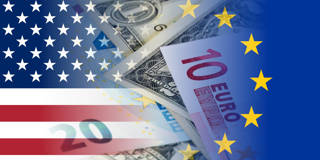OnPoint Subscriber Exclusive
The Big Picture brings together a range of PS commentaries to give readers a comprehensive understanding of topics in the news – and the deeper issues driving the news. The Big Question features concise contributor analysis and predictions on timely topics.

Inflation Remedies
Inflationary pressures persisted in leading advanced economies in December, with the year-on-year increase in US consumer prices reaching a four-decade high of 7%, and eurozone inflation climbing to 5% – its highest level since the introduction of the euro. While debate continues as to the right policy response, the current episode will doubtless hold important lessons for the US Federal Reserve, the European Central Bank, and economic forecasters alike.
In this Big Picture, John H. Cochrane of the Hoover Institution argues that the Fed has not only failed to ensure price stability, but has also created dangerously misaligned incentives in the US financial system. Likewise, Jürgen Stark, a former member of the ECB Executive Board, Thomas Mayer of the Flossbach von Storch Research Institute, and Gunther Schnabl of the University of Leipzig warn that rising inflationary pressures threaten the credibility of a politicized ECB. But Melvyn B. Krauss of New York University thinks the ECB, which has no fiscal backstop and must also worry about the eurozone’s cohesion, is right not to normalize monetary policy too fast.
After all, rapid policy tightening is not the only anti-inflation tool. Jayati Ghosh of the University of Massachusetts Amherst argues that rich-country governments could help the world’s poor by curtailing the stockpiling and speculation that are contributing to surging food prices. And Harvard University’s Dani Rodrik shows why economists’ prescriptions for price stability should never be viewed as reflecting universal rules.
Better forecasts would help, too. To that end, Harvard’s Jason Furman laments economists’ near-universal failure to predict the current bout of high US inflation, and urges them to take their models more seriously and address other analytical shortcomings.